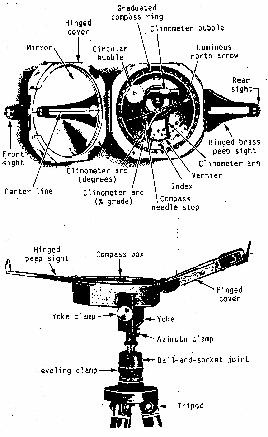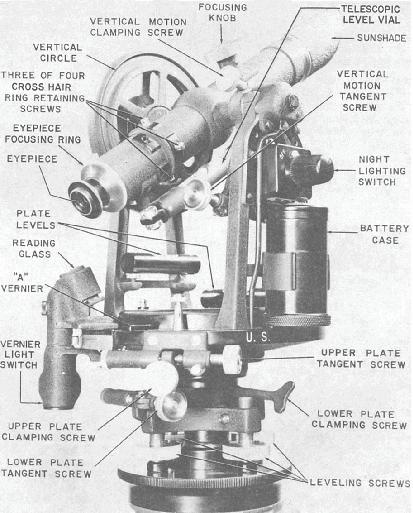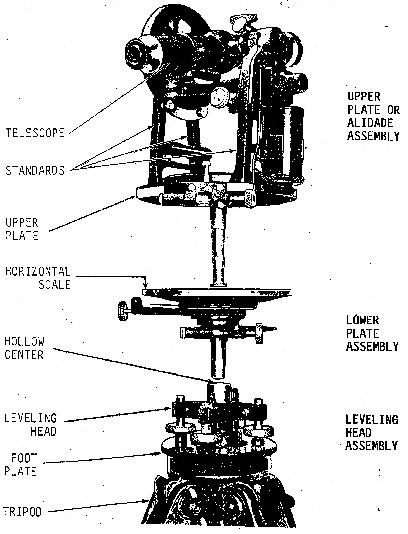Chapter: CiIvil Surveying : Compass and Plane Table Surveying
Engineer's Transit
ENGINEER'S TRANSIT

Figure
11-5.-A Brunton pocket transit.
The transit (fig. 11-6) is often called
the universal survey instrument because of its uses. It may be used for
measuring horizontal angles and directions, vertical angles, and differences in
elevations; for prolonging straight lines; and for measuring distances by
stadia. Although transits of various manufacturers differ in appearance, they
are alike in their essential parts and operations.
The engineer'stransitcontains several
hundred parts. For-descriptive purposes, these parts may be grouped into three
assemblies: the leveling head assembly, the lower plate assembly, and the upper
many plate or alidade assembly (fig. 11-7).
Leveling
Head Assembly
The leveling head of the transit
normally is the four-screw type, constructed so the instrument can be shifted
on the foot plate for centering over a marked point on the ground.
Lower
Plate Assembly


Figure
11-7.-An engineer's transit,
exploded view.
center of a circular plate and
accurately fitted the socket in the leveling head. The lower plate contains the
graduated horizontal circle on which the values of horizontal angles are read
with the aid of two verniers, A and B, set on the opposite sides of the circle.
A clamp controls the rotation of the lower plate and provides a means for
locking it in place. A slow-motion tangent screw is used to rotate the lower
plate a small amount to relative to the leveling head. The rotation
accomplished by the use of the lower clamp and tangent screw is known as the
LOWER MOTION.
Upper
Plate or Alidade Assembly
The upper plate, alidade, or vernier
assembly consists of a spindle attached plate to a circular plate carrying
verniers, telescope standards, plate-level vials, and a magnetic compass. The
spindle is accurately fitted to coincide with the socket in the lower plate
spindle.
A clamp is tightened to hold the two
plates together or loosened to permit the upper plate to rotate relative to the
lower plate. A tangent screw permits the upper plate to be moved a small amount
and is known as the UPPER MOTION.
The standards support two pivots with
adjustable bearings that hold the horizontal axis and permit the telescope to
move on a vertical plane. The vertical circle moves with the telescope. A clamp
and tangent screw are provided to control this vertical movement. The vernier
for the vertical circle is attached to the left standard. The telescope is an
erecting type and magnifies the image about 18 to 25 times. The reticle
contains stadia hairs in addition to the cross hairs. A magnetic compass is
mounted on the upper plate between the two standards and consists of a
magnetized needle pivoted on a jeweled bearing at the center of a graduated
circle. A means is provided for lifting the needle off the pivot to protect the
bearing when the compass is not in use.

Figure
11-8.-Horizontal scales, 20 second transit.
Related Topics